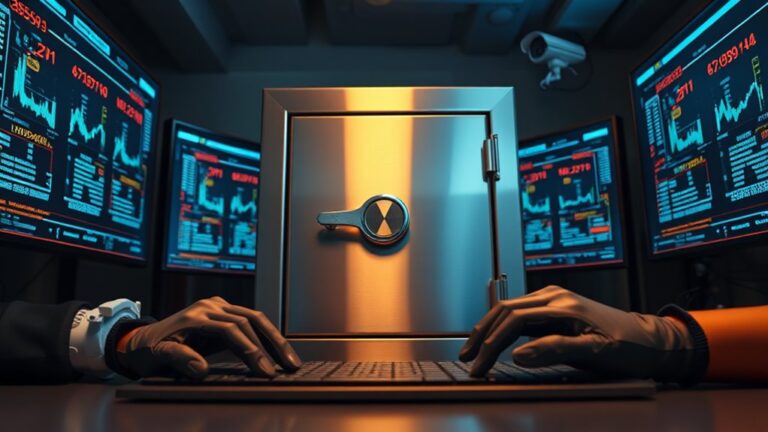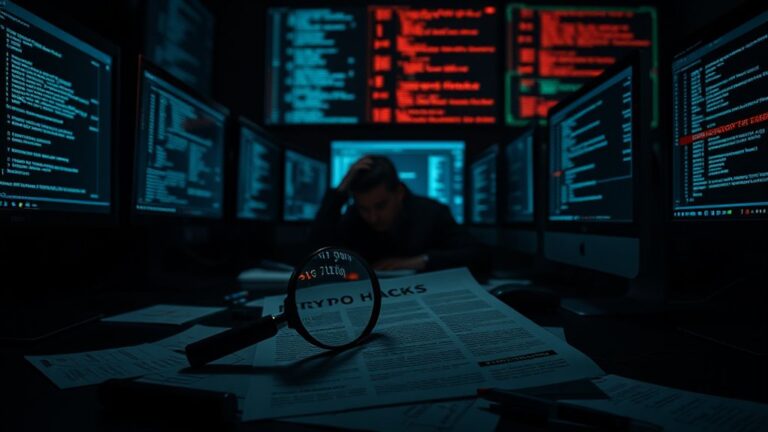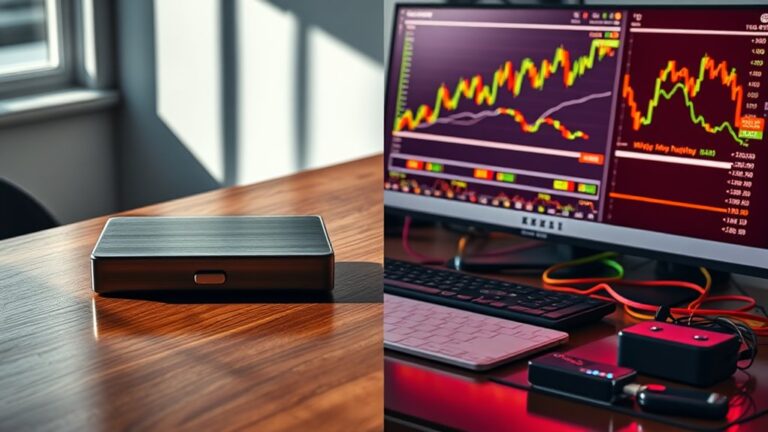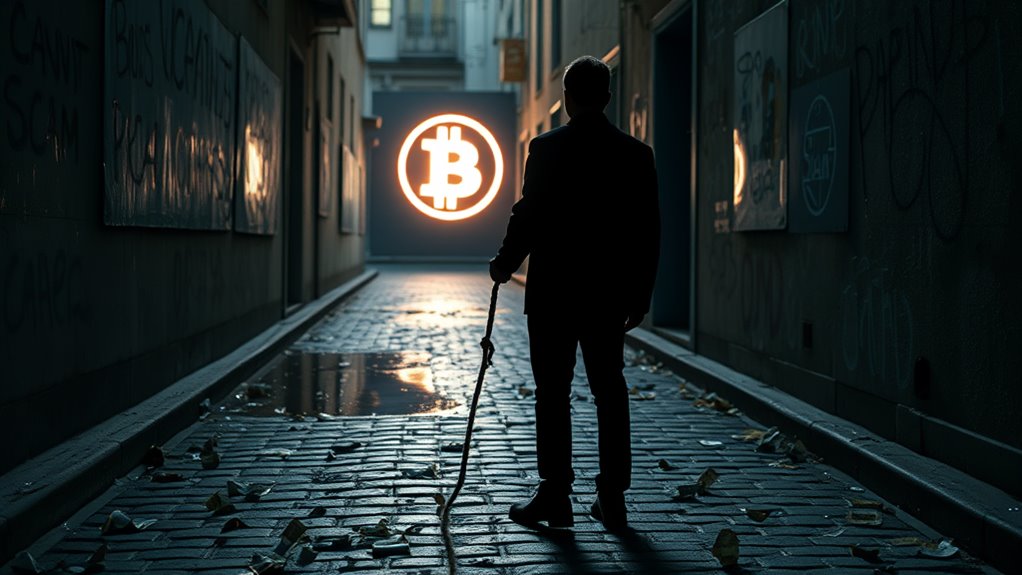
Rug Pull: What Is It and How to Avoid?
A rug pull is a cryptocurrency scam where developers abandon a project after collecting investor funds, leaving behind worthless tokens. Warning signs include anonymous teams, unrealistic promises, lack of transparency, and erratic price movements. To protect investments, investors should research project teams, verify code through security audits, monitor community engagement, and utilize secure storage methods. Implementing these protective measures can greatly reduce vulnerability to these increasingly common digital asset scams.
Key Takeaways
- A rug pull is a crypto scam where developers abandon projects after collecting funds, leaving investors with worthless tokens.
- Warning signs include anonymous teams, unrealistic promises, limited trading volume, and lack of transparent roadmaps or whitepapers.
- Protect yourself by researching project teams, verifying their credentials, and analyzing the code through security audits.
- Monitor investments continuously using blockchain explorers and engage with online communities for insights about potential scams.
- Store most crypto in cold wallets, use exchanges with strong security measures, and never invest more than you can afford to lose.
Understanding Rug Pulls in the Cryptocurrency Space
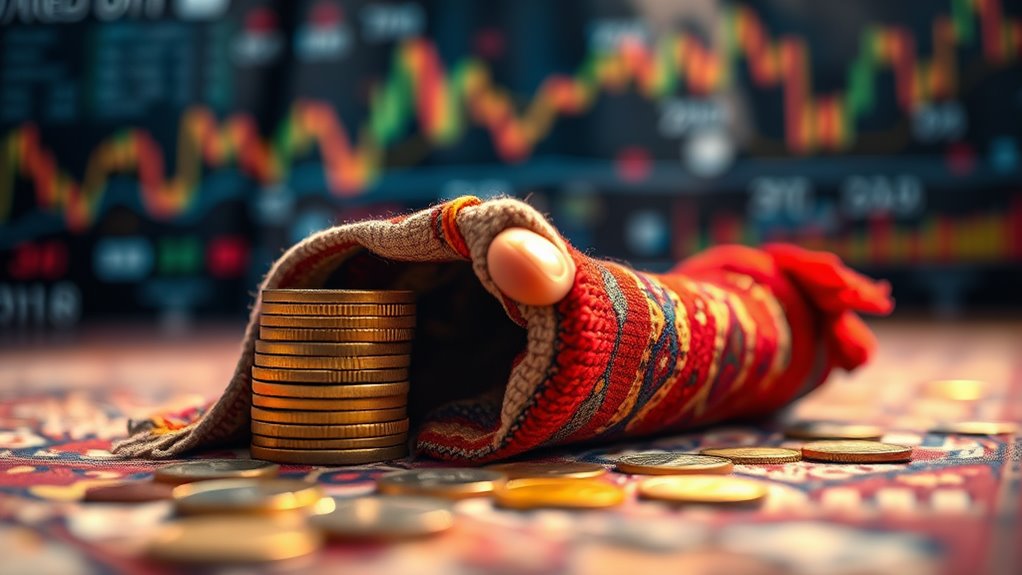
What exactly constitutes a rug pull in the often volatile world of cryptocurrency? A rug pull occurs when developers suddenly abandon a crypto project after collecting investor funds, leaving them with worthless tokens.
This deceptive practice has become increasingly common in the decentralized finance (DeFi) landscape, where traditional regulatory oversight is minimal.
Notable examples of rug pulls include OneCoin, Thodex, and AnubisDAO, all of which resulted in substantial financial losses for investors.
Infamous rug pulls like OneCoin, Thodex, and AnubisDAO have devastated countless investors, leaving financial ruin in their wake.
The inherent risk of rug pulls is amplified in the DeFi space due to the lack of conventional verification processes and regulatory frameworks that exist in traditional financial markets.
Investors often find themselves vulnerable to these schemes, as the decentralized nature of cryptocurrency makes it difficult to recover funds or hold perpetrators accountable.
The Mechanics Behind Crypto Rug Pulls
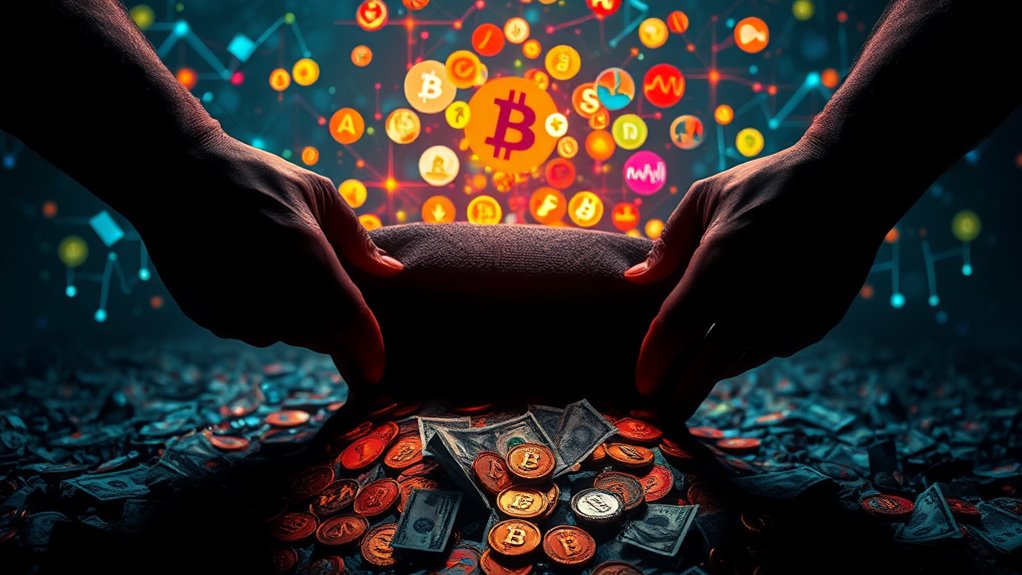
The mechanics of cryptocurrency rug pulls involve strategic exploitation of several vulnerable areas within the crypto ecosystem.
Scammers typically begin by manipulating liquidity pools on decentralized exchanges, often creating an initial impression of legitimate trading activity while implementing a deceptive token distribution model that concentrates power in their hands.
As investor confidence and token value rise, perpetrators execute their carefully planned exit strategy in phases, which might include gradually withdrawing liquidity, limiting sell orders for regular investors, and ultimately abandoning the project while making off with substantial funds.
Liquidity Pools Exploitation
Understanding how liquidity pools function is essential for recognizing the mechanics behind crypto rug pulls. These pools contain paired assets whose prices are determined by their ratios within the pool. Exploiters manipulate these ratios through various techniques to artificially inflate token prices before stealing funds.
Common exploitation methods include:
- Token burning – Deliberately reducing token supply to create artificial price surges, sometimes reaching increases of 22,000%.
- Flash loans – Borrowing large amounts of cryptocurrency to temporarily manipulate pool ratios before returning the loan in the same transaction.
- Backdoor utilization – Employing hidden code in smart contracts that allows developers to bypass security measures and drain funds.
These techniques create extreme price volatility, ultimately leaving investors with worthless tokens after developers abandon the project.
Deceptive Token Distribution
Deceptive token distribution forms the foundation of most cryptocurrency rug pulls, enabling scammers to extract maximum value before abandoning their projects.
The process typically begins with anonymous developers creating tokens and generating hype through aggressive marketing campaigns on social media platforms like Twitter and Telegram.
To appear legitimate, scammers list these tokens on decentralized exchanges with significant liquidity, creating an illusion of market depth.
The smart contracts often contain hidden exploits, such as unlimited token creation functions or transfer restrictions that can be activated later. These technical manipulations allow developers to maintain control while presenting the project as decentralized.
Once sufficient investor funds have been collected, developers swiftly abandon the project, leaving investors with worthless tokens.
This pattern of creation, promotion, and abandonment has become a recognizable signature of cryptocurrency rug pulls. Additionally, many of these projects are launched as Initial Coin Offerings (ICOs), which may contribute to the deceptive nature of fundraising in the crypto space.
Exit Strategy Phases
Most cryptocurrency rug pulls unfold through carefully orchestrated exit strategy phases that leave investors with empty wallets and worthless tokens. Scammers typically execute these schemes methodically, ensuring they maximize profits before disappearing completely.
- Promotion Phase – Creators aggressively market the project using fake partnerships, celebrity endorsements, and bot-driven social media hype to attract maximum investment.
- Technical Preparation – Developers implement contract exploits like honeypot mechanisms or sell limitations that trap investor funds while allowing creators to withdraw freely.
- Liquidity Extraction – In the final phase, scammers execute their exit by either dumping large token supplies suddenly, removing liquidity from trading pools, or activating hidden smart contract functions to drain funds directly.
Red Flags and Warning Signs to Watch For

Investors should be alert to suspicious token activity, including erratic price movements and concentrated holdings in a few wallets.
Project teams with anonymous identities or questionable past involvement in failed crypto ventures represent significant warning signs.
These red flags, when combined with limited trading volume and aggressive marketing tactics, often indicate a potential rug pull operation in progress. Additionally, it is crucial to read the white paper to understand the project’s details and goals before investing, as poorly written documents can signal trouble.
Suspicious Token Activity
Numerous warning signs can alert crypto investors to potential rug pulls before they occur. When analyzing token activity, investors should pay particular attention to unusual patterns that deviate from legitimate project behaviors.
- Liquidity concerns – Projects with very low liquidity are vulnerable to price manipulation, while lack of locked liquidity allows developers to withdraw funds easily, often signaling nefarious intentions.
- Price volatility patterns – High volatility following launch, sudden price spikes followed by rapid declines, and unstable token prices shortly after introduction frequently indicate manipulative practices.
- Transaction red flags – Large, frequent transfers between different accounts, transactions structured to fall below reporting thresholds, and immediate withdrawals without transaction history can signal preparation for an imminent rug pull. Additionally, incidents like the Poly Network hack serve as a reminder of the potential vulnerabilities in cryptocurrency projects, underscoring the need for thorough due diligence.
Questionable Team History
Beyond suspicious token activity, examining the team behind a cryptocurrency project offers critical insight into its legitimacy. Projects with anonymous developers or teams lacking verifiable backgrounds present significant red flags. Investors should be wary of teams without proven track records in the cryptocurrency space.
| Warning Sign | What to Look For | Risk Level |
|---|---|---|
| Anonymous Team | No verifiable identities or LinkedIn profiles | High |
| Inconsistent Information | Contradictions in team bios or project details | Medium |
| Lack of Engagement | Teams unresponsive to community questions | High |
Watch for unclear role definitions within the team structure. Legitimate projects typically feature transparent organizational hierarchies with clearly defined responsibilities. When team members disconnect from community feedback or avoid answering direct questions about their backgrounds, consider these serious warning signs of potential rug pull schemes. Additionally, it’s important to secure any remaining assets by moving them to a secure hardware wallet as a precaution against potential losses.
Notable Rug Pull Examples and Their Aftermath

The cryptocurrency world has witnessed several devastating rug pulls that serve as cautionary tales for investors.
These scams have resulted in billions of dollars in losses and severely damaged trust in the crypto ecosystem.
Trust is the crypto market’s most valuable currency, eroded with each multi-million dollar scam.
- Bitconnect – One of the earliest major rug pulls that collapsed in January 2018 after promising unrealistic 40% monthly returns, leaving investors with substantial losses when it peaked at over $400.
- Squid Game Token – Surged from $0.01 to $2,861 in days before developers blocked selling capabilities and disappeared with approximately $3.38 million.
- AnubisDAO – Raised $60 million in investor funds before swiftly transferring all assets to another address, causing the token price to crash to zero with no recovery options.
Protecting Your Investments From Scams
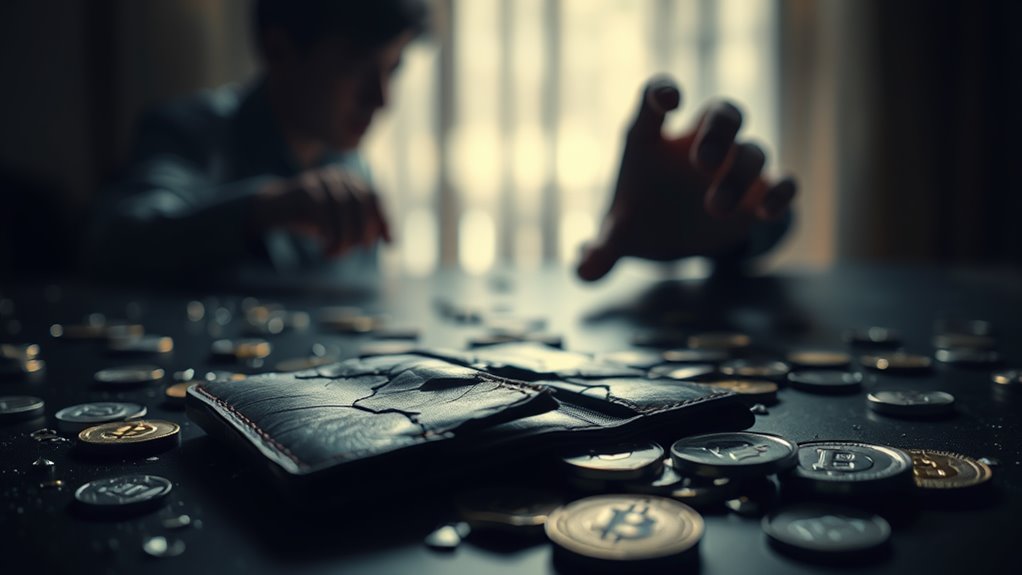
Safeguarding cryptocurrency investments requires vigilance, knowledge, and strategic planning to avoid falling victim to increasingly sophisticated rug pulls and scams.
Investors should conduct thorough research on project teams, technology, and community support before committing funds.
Security best practices include utilizing cold storage for most holdings while maintaining smaller amounts in hot wallets for convenience.
When selecting exchanges, prioritize those with robust security measures and insurance coverage.
Private key management remains critical, with multisignature wallets offering additional protection.
Warning signs of potential scams include unrealistic return promises, excessive marketing, pressure for quick investment, and limited transparency.
Implementing cybersecurity tools like VPNs and anti-phishing software provides additional protection layers.
For substantial holdings, consider formal asset protection structures such as trusts or Series LLCs to segregate and shield investments.
Additionally, keeping software and apps up to date ensures users benefit from the latest security patches, which is vital in protecting against emerging threats.
The Role of Due Diligence in Crypto Security
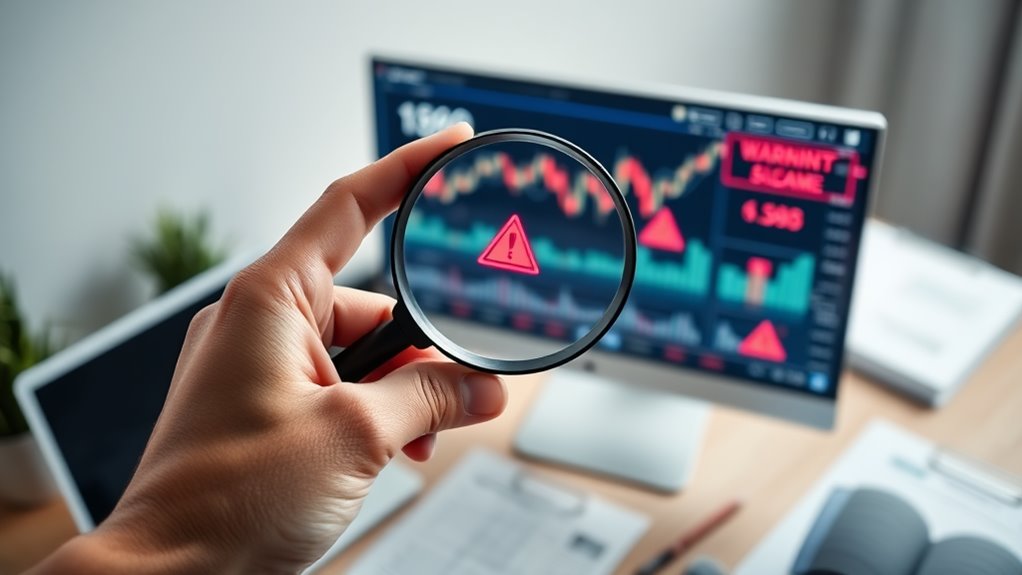
Effective due diligence serves as the foundation of cryptocurrency security, creating a protective barrier between investors and potential rug pulls. By thoroughly investigating projects before investing, individuals can identify warning signs and avoid fraudulent schemes.
Key elements of cryptocurrency due diligence include:
- Technical assessment – Evaluate the blockchain architecture, review smart contract audits, and check for coding backdoors that could enable developers to steal funds.
- Team verification – Research developers’ backgrounds, confirm identities, and evaluate past project histories.
- Regulatory compliance – Verify the project adheres to relevant KYC/AML policies and operates within appropriate legal frameworks.
In addition, understanding the differences between Centralized Exchanges (CEX) and decentralized exchanges (DEX) is crucial for making informed investment decisions.
Ongoing monitoring remains essential even after initial investment, as market conditions and regulatory landscapes continuously evolve.
Regular security assessments can help investors respond quickly to emerging threats.
How Legitimate Projects Differ From Rug Pulls

Distinguishing legitimate cryptocurrency projects from potential rug pulls requires investors to recognize specific characteristics that signal trustworthiness in the volatile digital asset space.
Legitimate projects typically feature transparent teams with verifiable backgrounds, clear roadmaps, and realistic return expectations.
While fraudulent schemes often promise extraordinary yields, authentic projects maintain consistent development activity, regularly communicate updates, and willingly undergo third-party security audits.
Trustworthy ventures also demonstrate financial transparency regarding fund allocation and maintain locked liquidity pools to prevent sudden withdrawals.
Red flags for potential rug pulls include anonymous developers, excessive marketing without substantive progress, unrealistic promises, and absence of proper security audits.
Investors should verify locked liquidity, investigate project history, evaluate whitepaper feasibility, and engage with community feedback before committing capital, all while avoiding investment decisions driven by FOMO. Moreover, as regulatory frameworks evolve, they can impact project legitimacy and consumer protection in the crypto space.
Legal and Regulatory Responses to Crypto Scams

As cryptocurrencies have gained mainstream adoption, regulatory bodies worldwide have developed increasingly sophisticated frameworks to combat the rising tide of crypto scams. In the United States, multiple agencies oversee different aspects of the crypto ecosystem, creating a complex but thorough regulatory environment.
- The SEC and CFTC distinguish between securities and commodities in crypto assets, targeting platforms that violate regulations.
- Law enforcement agencies pursue rug pull operators, though legal challenges exist in prosecuting these schemes across international borders.
- Bitcoin ATM operators face increased scrutiny from state attorneys general for facilitating scams through inadequate fraud prevention.
Despite these efforts, jurisdictional limitations and evolving definitions of what constitutes fraud in decentralized finance continue to challenge regulators as they work to protect consumers. Additionally, implementing multi-factor authentication can significantly enhance the security measures that exchanges adopt to prevent such scams.
Community Resources for Verifying Project Legitimacy

Beyond regulatory oversight, crypto investors must develop their own verification strategies to protect themselves from potential scams. Community platforms offer valuable insights through collective intelligence.
Investors should examine discussions on Reddit, Telegram, Discord, and Bitcointalk to gauge sentiment and identify warning signs. Legitimate projects typically maintain active social media channels with genuine engagement rather than bot-generated comments.
Community-driven events and regular developer updates signal ongoing project development. When researching a project, investors should review technical documentation, including whitepapers and roadmaps, while verifying team members’ credentials through professional networks like LinkedIn.
Third-party security audits provide additional validation, particularly for smart contracts and code vulnerabilities. By combining these community resources with technical verification, investors can construct a more thorough picture of project legitimacy before committing funds. Additionally, leveraging the concept of decentralization for security can further enhance the protection of investments against fraud and cyber threats.
Frequently Asked Questions
Can Victims of Rug Pulls Ever Recover Their Lost Funds?
Recovery from rug pulls is extremely difficult. Limited options include legal action, community coordination, and tax write-offs. Due to anonymity, lack of regulation, and blockchain irreversibility, most victims never recover their funds.
Are Hardware Wallets Effective Protection Against Rug Pulls?
Hardware wallets protect against unauthorized access to crypto assets but cannot prevent rug pulls. These devices secure private keys offline, whereas rug pulls involve voluntary transactions to fraudulent projects—a fundamentally different security concern.
How Quickly Do Rug Pulls Typically Unfold From Launch to Collapse?
Like a comet’s fleeting brilliance, rug pulls can unfold dramatically fast. They typically collapse within days to weeks after launch, though some rapid schemes drain liquidity within hours or even minutes of peaking.
Do Insurance Options Exist for Cryptocurrency Investors Against Rug Pulls?
Currently, dedicated insurance for rug pulls is limited. Some cyber insurance and blockchain-specific policies exist, but they often exclude cryptocurrency scams. Future solutions may emerge as the market demand and regulatory frameworks evolve.
How Are Regulatory Frameworks Evolving to Specifically Address Rug Pulls?
Like Hercules cleansing the Augean stables, regulatory frameworks are evolving through stricter registration requirements, developer identity disclosure mandates, specialized criminal penalties, enhanced international cooperation, and targeted anti-money laundering regulations to combat cryptocurrency rug pulls.
Conclusion
While investors diligently research projects and scrutinize warning signs, rug pulls continue to thrive in the cryptocurrency landscape. Ironically, the same decentralized freedom that attracts many to crypto creates the perfect environment for sophisticated scams to operate. As regulations struggle to keep pace with innovation, the most effective protection remains an investor’s skepticism—a currency perhaps more valuable than Bitcoin itself in this digital frontier.








